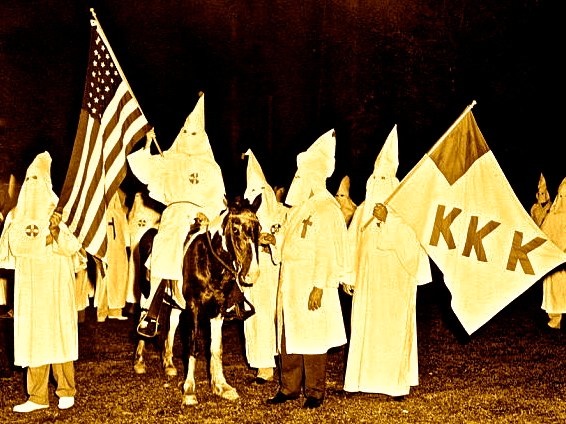Hate and the KKK
“Hate” is the word of the day...hate for Our President and hate represented by the KKK.

The KKK hate is assumed or presumed to be directed at minorities. That presumption may be true today, but it was not always the case.
During WWI and for several years after, individuals with German surnames were the main targets of the KKK in this area.
This reign of terror is documented by Dr. Walter Kamphoefner of Texas A&M in the June 2008, issue of the Southwestern Historical Quarterly. In his “The Handwriting on the Wall: The Klan, Language Issues, and Prohibition in the German Settlements of Eastern Texas,” Kamphoefner documents some of the incidents that my parents, who lived through and experienced some of the incidents, talked about frequently.
He does confirm in writing one of my parents’ suspicions. On page 57, he documents, “Sheriff [Burney] Parker had offered one hundred dollars out of his own pocket for leads on Marshal King’s abduction, but as leader of the Klan [emphasis added], there was little danger that anyone would collect from him.”
A crime not mentioned by Kamphoefner involved one of my acquaintances in Somerville. This was Rose Lange, about ten years my senior, who was missing a finger. That finger had been shot off when she was trying to pull her father back into their home away from Klansmen who had come to get him. Her father was killed and one of the bullets meant for him took off Rose’s finger.
Paul Klingsporn, a long time District Clerk of Washington County, who is mentioned by Kamphoefner, was a close friend of my family. One of his sons, Robert, told me that when his Dad first filed for office, he was threatened by the Klan. He sought refuge with my family that was living where I live now. The family provided that refuge by arming themselves and taking position in the fields along the road. The Klan got word of the waiting ambush and never showed up.
Another incident involving the Klan cutting and running when confronted with real resistance involved an acquaintance of my parents. He lived outside of Somerville and learned that the Klan was coming for him. He laid in wait in the woods in front of his home and, as the Klan entered his gate, he began firing. Those hoodlums turned their horses and fled.
In the melee, one of the Klansmen lost his hat. The next day, the threatened man rode through Somerville on his horse with the hat displayed on the end of his rifle. Hanging under the hat was a sign proclaiming that the hat had been lost on his property and the owner was welcome to claim it.
The hat was never claimed, and my parents believed it belonged to one of their neighbors, who shall remain anonymous.
Another incident recorded by Kamphoefner involved Brenham attorney A. W. Hodde. He was taken out of town at gun point, beaten, tarred, and told to leave town.
Brenham attorney Johnnie Lacina, a descendant of Hodde gave me a copy of the August 18, 1921, issue of the Chicago Daily Tribune in which this incident was reported.
The headline of the article is, “Texans Beaten, tarred, warned, one 30, one 60.”
Hudde was the 30 year old man discussed. Joe B. Guyton was the 60 year old, who was described as being “in serious condition.” The paper noted that Guyton had been warned to leave Brenham, had done so, but returned ten days later. His beating was the response.
Interestingly, the Tribune saw fit to note that both Hodde and Guyton were “white.”
So here’s the perspective.
This is just the tip of the iceberg. Next week we will get personal with the saga of my grandfather, H. J.
“Judge” Neinast and Burney Parker, Sheriff and head of the Democrat Party, draft board, and the Klan of Washington County.
Hate recognizes no color.
enough





